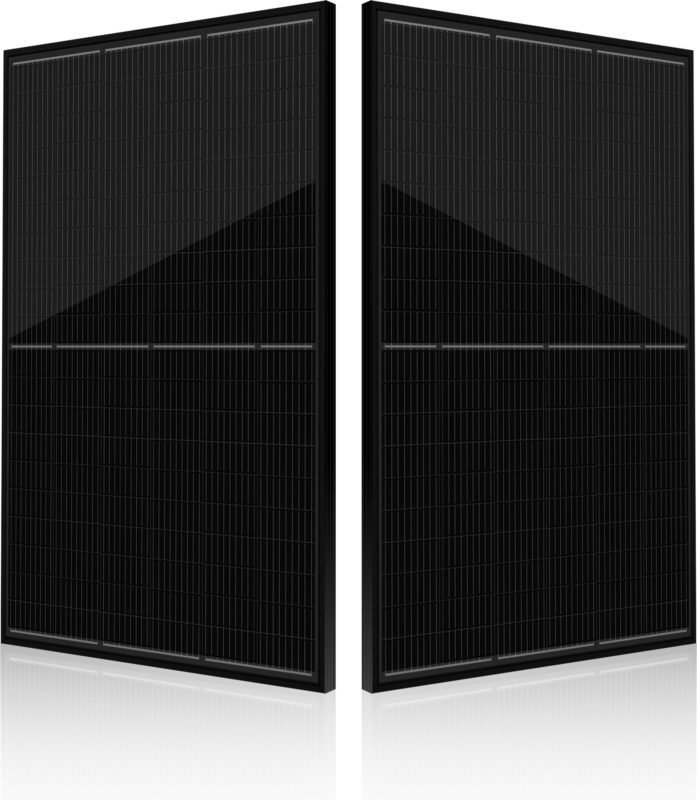
Seraphim Solar has introduced its S2 full-black half-cell series module, specifically tailor-made for residential and commercial rooftop installations. This new iteration of the present S2 module series offers an all-black facade for superior aesthetics, while providing high-performance power output of up to 330Wp, advanced shading protection and an extensive 15-year product warranty.
Problem
Try Premium for just $1
- Full premium access for the first month at only $1
- Converts to an annual rate after 30 days unless cancelled
- Cancel anytime during the trial period
Premium Benefits
- Expert industry analysis and interviews
- Digital access to PV Tech Power journal
- Exclusive event discounts
Or get the full Premium subscription right away
Or continue reading this article for free
The rooftop PV market is rapidly transitioning to higher-performance modules to reduce installation costs, while owners are becoming increasingly knowledgeable and discerning regarding the overall PV system aesthetics with preference for greater visual integration into the roof. However, all-black modules have previously sacrificed yield for greater aesthetics, either raising installations costs as more modules are required for a given system size or sacrifice total system yield due to limited rooftop space. Such limitations can be increased when rooftop shading issues may be present that could lead to higher system design and installation costs, due to the need for microinverters or power optimizers to limit the performance impact of shading.
Solution
Seraphim’s S2 full-black half-cell module series has been specifically designed to meet the need for superior aesthetics without sacrificing power output for residential and commercial rooftop installations. The full-black module utilizes a range of large-area wafers, as well as half-cut cells, offering a power output of up to 330Wp with a module conversion efficiency rate of 19.5%. Half-cut monocrystalline PERC (Passivated Emitter Rear Cell) technology reduces current and sheet resistance when deploying large-area wafers and minimizes mismatch losses and reduces cell to module losses, boosting output. The S2 series module comprises two separated and identical solar cell arrays, which means the ordinary strings of cells are cut into halves, and these shorter strings compose of arrays which has separated current paths. When a module is partially shaded, only one side shaded array's current will be impacted, while the other array will still be functionally producing power. Under this circumstance, when a module is shaded, the affected working areas will be less than 50%. This can avoid the need for microinverters or power optimizers, lowering the BOS (Balance of System) costs and reducing system design and installation complexity. The high-performance modules can also reduce BOS costs simply due to fewer modules required to achieve maximum rooftop utilization and customer system output requirements. The superior aesthetic appearance of the all-black module is achieved with the use of tightly packed cells using advanced interconnect technology and specially designed black ribbon (busbars) a black backsheet with a black anodized aluminum frame.
Applications
A wide range of rooftop installations requiring superior aesthetics and improved shading performance.
Platform
Seraphim’s S2 full-black half-cell module series is available in three different formats to meet the specific needs of the wide range of residential and commercial rooftop requirements. The smallest module is a 60-cell half-cut (120-cell) format using 158.75mm x 158.75mm large-area wafers with dimensions of 1,690mm x 1,002mm, weighing 19KG. The medium sized module uses 166mm x 166mm large-area wafers in a 60-cell half-cut (120-cell) format with module dimensions of 1,776mm x 1,052mm, weighing 20KG. The largest sized module in the S2 full-black series has a 66-half-cut (132-cell) format with 158.75mm x 158.75mm large-area wafers and dimensions of 1,852mm x 1,002mm, weighing 20KG. All modules have a 35mm thick all-black anodized aluminum frame. Instead of the standard 10-year product warranty, this series product provides 15-year product warranty and 25-year linear output power warranty. The first year power warranty is within 2.5%, and linear annual attenuation is within 0.6%.
Availability
July 2020, onwards. (Europe, Southeast Asia, Japan, Australia, etc.)
PV Tech is hosting a TechTalk Product Series webinar with Seraphim Solar to help PV installers, distributors and interested parties understand the next-generation of all-black solar panels that do not sacrifice performance for superior aesthetics that is increasingly being demanded in the residential rooftop sector.
Title: Meeting rooftop system performance needs with superior solar module aesthetics
Thursday, July 23rd 2020 – 10:00 AM (BST)
More information and free registration can be found here.






